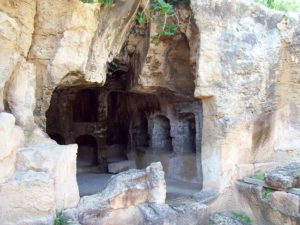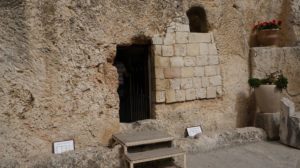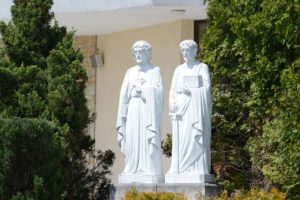The Resurrection is the lynchpin that marks the Christian faith, the only faith that claims their leader defeated death. Many skeptics, cultist and some from other faiths dispute the fact of the Resurrection and some even say that Jesus did not die on the cross. Dr. William Lane Craig, World Renowned Christian Apologist, Theologian and Philosopher has said:
“When we turn to the Gospels, we find multiple, independent attestation of this burial story, and Joseph of Arimathea is specifically named in all four accounts. On top of that, the burial story in Mark is so extremely early that it’s simply not possible for it to have been subject to legendary corruption. When you read the New Testament, there’s no doubt that the disciples sincerely believed the truth of the resurrection, which they proclaimed to their deaths. The idea that the empty tomb is the result of some hoax, conspiracy, or theft is simply dismissed today.”
I was privileged to hear Dr. Craig debate with a well-known atheist. What I observed was a studied, articulate and fair-minded Christian man who gave fact after fact in support of the historicity of the resurrection, just like a well prepared lawyer. The atheist was winsome and funny but dodged direct topics, giving antidotal accounts with no facts to back up any of his assertions.
It occurred to me that this is exactly what happens in everyday ‘water cooler’ conversations. People tend to hold beliefs on important topics based on second and third hand information without putting the time into backing it up with verified evidence. Christians are often backed into a corner when false claims are made about Christianity, especially on the topic of the Resurrection, without being prepared to give an answer.
Here are four points that might help the next time the topic of the Resurrection comes up:
1. Jesus was tried and executed by crucifixion on a Roman cross—death was certain
- Crucifixion is confirmed as the type of execution used by the Romans in this era only.
- The certainty of their victims’ death is required of Roman soldiers as professional executioners.
- People in the first century were experts on death because they were responsible for burying their own and knew what death looked like and therefore would know beyond a doubt that Jesus was dead.
- Undisputed Biblical and non-Biblical sources confirm the no one could have survived the following facts of Jesus’ death and burial, yet the body was gone the third day:
- The type of beating and torture he endured before the crucifixion was so brutal it brought him to the brink of death before being placed on the cross.
- Crucifixion requires struggling to push upward as they hang there to get every breath, and he did this for hours.
- There is massive blood loss in this form of torture and execution.
- The spear the soldiers used to penetrate His side produced both blood and water (we know today this is pericardial fluid present upon death).
- Customary heavy burial spices were applied to the body before wrapping the body and being placed in the tomb by both Joseph of Arimathea and Nicodemus.
- The tomb was sealed and a mass of guards were placed in front to guard the body from being stolen.
2. The tomb was found empty on the third day
- The tomb location was certain: Jesus was buried in a tomb owned by Joseph of Arimathea, a Pharisee.
- The women disciples were the first to find the tomb empty. Since women did not have a level of prominence or respect in the Jewish culture at that time, and were usually considered second-class citizens, their testimony could have been discredited. If the story had been made up they would have claimed it was the men.
- The body was never recovered or found in another location which would have been easy to do in this era.
- The tomb was empty and the body was definitely missing as evidenced by the number of witnesses:
- Multiple women disciples
- Multiple men disciples
- The guards at the tomb and the Jewish Sanhedrin knew the tomb was empty because they made a deal to say the body was stolen. This deal was made because they did not want to get in trouble with Romans authorities as this would have resulted in their own executions.
- No one would have anything to gain, and everything to lose, in stealing or hiding the body.
- The disciples went to their deaths for claiming Jesus’ resurrection as truth, if they had stolen the body someone would have recanted, and people will not die for a known lie.
- If the body had been moved, stolen or if they had the wrong tomb, all they would have had to do was to produce the body, no one ever did that, and no one ever could because He rose.
3. There were multiple eyewitnesses who saw Jesus alive after His death
This Jesus God raised up again, to which we are all witnesses. Therefore having been exalted to the right hand of God, and having received from the Father the promise of the Holy Spirit, He has poured forth this which you both see and hear. For it was not David who ascended into heaven, but he himself says: ‘The Lord said to my Lord, “Sit at My right hand, until I make Your enemies a footstool for Your feet.'” Therefore let all the house of Israel know for certain that God has made Him both Lord and Christ, this Jesus whom you crucified.” The Apostle Peter in Acts 2:32-26
- Various groups, independent of each other, saw Jesus after the resurrection: Mary Magdalene and the other women, the two disciples on the road to Emmaus, the disciples hiding in the upper room, a second appearance to the disciples with Thomas present, 500 people at one time (see 1 Corinthians 15:3-8), and later the Apostle Paul. This discounts any claim that it was contrived or a hallucination.
- Luke records, in the book of Acts, that Jesus appeared to “various people in various places over the next forty days,” and finally He appeared to Saul of Tarsus on the road to Damascus.
- Peter and Paul, as they preached, said to people: “You know what has happened.” They said it this way because many of the people were witnesses and the crucifixion and resurrection account was all over Judea at this time.
- The four Gospels are considered primary eyewitness accounts that did not have enough time to be created from legend—anyone who wanted to dispute the claims were still alive when they were written, but no one did.
- There are numerous sources outside the Biblical accounts that speak to the events and life of Jesus and the resurrection, here are just five: Josephus, Tacitus, Lucian, Mara Bar-Serapion, The Jewish Talmud.
“Even the more skeptical historians agree that for primitive Christianity…the resurrection of Jesus from the dead was a real event in history, the very foundation of faith, and not a mythical idea arising out of the creative imagination of believers.” –Carl Braaten, Historian
4. Impossible converts to the Christian faith
- The disciples left the crucifixion as scared and dejected followers who went into hiding, but within a matter of days they became visible and outspoken defenders of Jesus and his resurrection—only the confidence that they saw and spoke with Jesus could have produced that kind of sudden and drastic change.
- Paul, a Pharisee and persecutor of the the early believers. He had everything to gain as a political and religious leader but he gave that all up to become a believer with the cost of torture, imprisonment and eventual martyrdom. Why? The only answer is that he saw the risen Christ.
- James, Jesus half brother, mocked him and did not believe in him, but then became the leader of the early Church (Acts 7-28. He put himself under heavy persecution and eventual martyrdom. Why? The only answer is that he saw the risen Christ.
- Many of the early Christians went to a martyr’s death. People will not die for a known lie and none of the disciples who witnessed the events, or future disciples, would denounce Jesus and His resurrection because they knew it was the truth.
Result = changed lives:
After Jesus’ resurrection, His giving of the Great Commission, and the coming of the Holy Spirit, the Apostles began preaching to the crowds in Jerusalem, Judea and the uttermost parts of the then known world. They performed many miracles in the name of Jesus including healings, casting out of evil spirits, and even raising people from the dead. As a result, thousands converted to Christianity and were baptized (Acts 2:14-47, 3:1-18). And, this continues today!
For further reading I highly recommend: “The Case for the Resurrection of Jesus” by Gary Habermas and Michael Licona; “Evidence for the Resurrection” by Josh and Sean McDowell; “The Case for the Real Jesus” by Lee Strobel; and “Cold Case Christianity” by J. Warner Wallace.
Watch this awesome 37 minute presentation on the evidence for the Resurrection by Dr. William Lane Craig:
Join us next week as we continue our investigation into Christianity claims!
—————————————————————————————————————————————————————-
You will not find this material in the public school curriculum even though it is based on solid evidence and grounded in research. It is ironic that following the evidence to where it leads stops at the door of our public schools as they will not let a “Divine footprint” in! Join us as we examine evidence for Christianity and learn how to become a thoughtful defender and ambassador of your faith.
Click into the resource page of this website to view many of the top Christian thinkers and apologists along with some of their work; connecting to these types of resources is essential in your Christian growth.
Please let me know what you think: Give feedback, ask questions or send concerns in the comment section of the blog.
Teri Dugan







Sorry, comments are closed for this post.